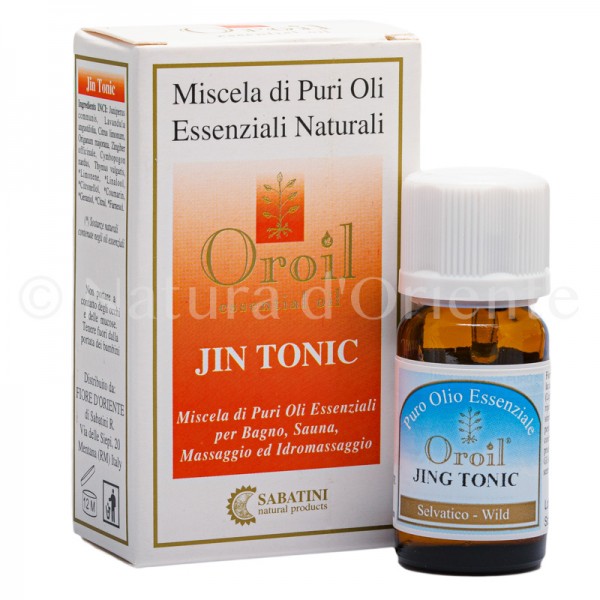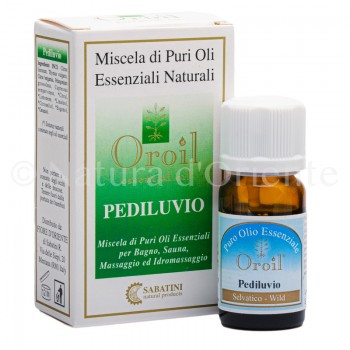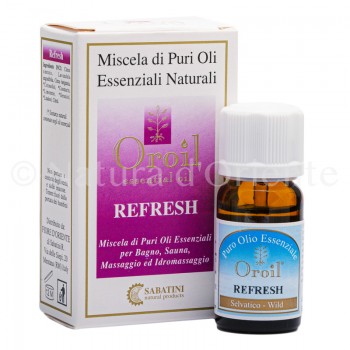The Jin Tonic blend is a blend of essential oils designed to obtain a toning and invigorating effect on the body.
Essential oils that make up the blend
The essential oils that make up the Jin Tonic blend come from the following plants: juniper (Juniperus communis), lavender (Lavandula angustifolia), lemon (Citrus limonum), marjoram (Origanum majorana) , ginger (Zingiber officinale), lemongrass (Cymbopogon nardus) and thyme (Thimus vulgaris).
The plants from which essential oils are obtained
The common juniper (Juniperus communis) is a small tree in the Cupressaceae family. The juniper can be a small tree but also a shrub, perennial and evergreen. The geographical distribution of the juniper is very vast and circumpolar, i.e. it is widespread everywhere but only above a certain longitude. Lavandula angustifolia is a plant of the Lamiaceae family, there are about fifty species of lavender, this is commonly known as true or medicinal lavender. The various species of lavender appear as a bush or shrub, the color is always the well-known purple. The term angustifolia, i.e. narrow leaf, indicates a distinctive feature of this species compared to other species.
Lemon (Citrus limon) is a fruit tree belonging to the Rutaceae family and to the genus Citrus. Like the vast majority of species of the genus Citrus (i.e. citrus fruits) it is believed to be a hybrid. The lemon is probably native to China, what is certain that the name by which we know it derives instead from the Persian. It is a small tree (from 3 to 6 meters) with small, white and fragrant flowers.
Marjoram (Origanum majorana) is an aromatic herbaceous perennial (in cold climates, however, it has an annual life cycle) belonging to the Lamiaceae family. It looks like a bush between 20 and 60cm tall, along the stem it has small leaves (the length varies from 8 to 20mm) arranged in opposite pairs.
The plant from which ginger is made is called Zingiber officinalis and belongs to the Zingiberaceae family. As is well known, the best known part of this plant is underground, it is the fleshy root which in reality is not really the root but the rhizome, that is, a modified part of the stem which assumes a reserve function. The visible part of the plant has longer and hollow stems that bear leaves but are sterile and shorter stems that bear the greenish-yellow flowers with purple spots and then the capsule fruits.
There are many citronellas, in fact they correspond to the botanical genus Cymbopogon of the Poaceae family (ie grasses). However, the essential oil of citronella is obtained from only two species, one is the Cymbopogon nardus, it looks like a bush with long ribbon leaves that give off a scent similar to that of lemon, in fact the common English name is lemongrass. Thymus is the name of a genus of plants of the Lamiaceae family which includes a few dozen species, the essential oil of thyme is obtained from the Thimus vulgaris species. The plant is a small evergreen shrub (it reaches a height between 10 and 30 centimeters) with slow growth.
Properties of the essential oils in the toning blend
The juniper essential oil like all the strongly balsamic essences in aromatherapy is appreciated for the invigorating sensation it instills. Lavender essential oil is appreciated for its calming and soothing properties. The lemon essential oil is well known above all for its disinfectant properties but it is also a tonic for the circulatory system and this is why we find it in a toning blend. Marjoram essential oil has anti-fatigue and toning properties which make it recommended to use it in the bathtub for a relaxing bath. The ginger essential oil is appreciated for its pain-relieving properties, useful both against muscle pain and headaches and also for being an anti-nausea useful against car sickness and other passive movement syndromes. Among other properties, lemongrass essential oil boasts that of being a muscle relaxant, the most interesting probably for including it in a toning blend. Thyme essential oil is one of those with the highest disinfectant power, thanks to its balsamic and disinfectant properties in aromatherapy



 No reward points for this product.
No reward points for this product.









